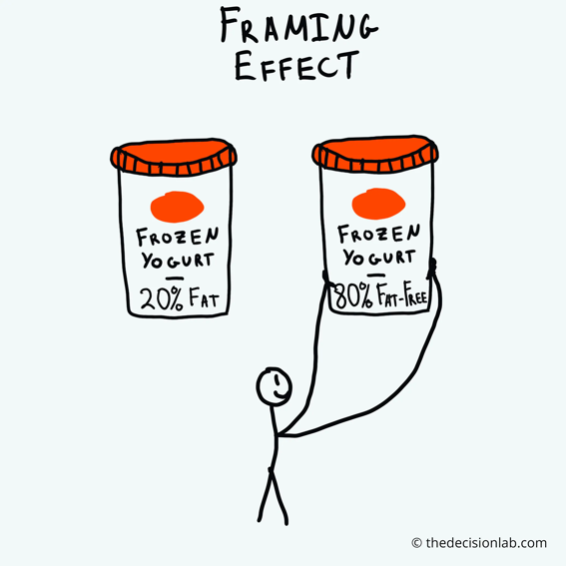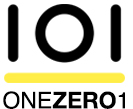Getting Perspective
In the summer of 2023 I had the good fortune to visit Guernsey, and spend time with family there. Despite some off-norm weather, a more frequent occurance these days and a reminder of our planets rebuke, we had the most relaxing of times on an island that is laden with natures delights. One of those is the coastal walks of the Moulin Huet Bay on the islands south east, just a ramble from where we were staying, which meanders along a rugged coastline revealing the most stunning views of the English Channel atop steep lush forest descents that run down to the sandy beaches.
On one of my morning rambles, I was stopped in my tracks to find a freestanding rusted steel picture frame at an opportune opening in the foliage (pictured above). One of 5 such ornate apertures I later found out, placed along the walkways in the area to commemorate Renoir who lived and worked in the vicinity in 1883, producing 15 paintings of note and celebration. On first encounter, I circled the edifice numerous times, almost pretending that I was Renoir himself looking for that picture perfect view. But later it got me to thinking as well as being a very clever tourist attraction, how important framing is, not just art, but in every walk of life.
Everpresent and Influential
Framing is present in every facet of our being, from the advertising we perpetually and oft subconsciously consume, to the way that we pitch for favour, to how we debate and influence one another in our day to day endeavours. There is even a Framing Effect, which exposes the framing biases we observe in our behavioural economics such as the likelihood to opt for loss avoidance over gain potential. The image below, thanks to The Decision Lab, illustrates this and how our decisions are influenced by the way information is presented. The rub being equivalent information can be more or less attractive depending on what features are highlighted, and thus sway our decisioning.

Extend this to the business of business, and strategy in particular, where we could observe that the decisions we make in enterprise and innovation on a day to day basis are a product of our framing, and our resulting cognitive responses. Hence the importance of reflecting on the importance of this implicit and influential activity, and how it can be a companion if we choose to embrace it, or a lost opportunity should we not.
The Fundamentals of Framing
Let us now unpack how framing can be our friend, and our tool of choice architecture in strategic business decisioning. Across 3 layers, we see 6 fundamentals of framing that could and should be observed and leveraged to put forward the best cases, and therefore extract the best decisions at the heart of day to day business dialogue. These are as follows:
Layer 1 – Foundational Framing: Context, Consideration, Consequence and Choices
The first 4 fundamentals of framing that we present here are what we might suggest are the departure points of strategic analysis to support business decisioning from a ground up level – they are:
- Conundrums: at the start of any strategic exercise and examination is the framing of opportunities and/or threats, which present both context and consequence. For instance, a competitor introducing a superior product at a lower price point that could erode ones market share
- Questions: based on the conundrum at hand, a well designed question set enables disciplined exploration of the key considerations and consequences. Following our example, an illustrative questions set could include:
-
- How are clients likely to respond?
- How will other competitors react?
- Is such a cost-cutting move sustainable, or a short-term opportunistic tactic?
- Simulations: the question set allows us to model the myriad of permutations that are abound, and shape the range of potential options at hand. Continuing to pull the thread, we could imagine that said competitor has found an innovative means to shift the market dynamics e.g. a new materials innovation that is protected by IP
- Scenarios: based on the simulations extracted, we can now extract the pros and cons of various responses, and lead to an ‘educated’ position (as opposed to a ‘guess’). So in our thread, we might consider a cost war response, or an array of feature counter-measures and perhaps even market withdrawal – each offering a set of choices for consideration and ultimately decisioning
The 4 inquisition steps of framing as outlined in layer 1 could be said to be the fundamentals of strategic decisioning, but that’s not wholly the case. They are surely foundational steps in the strategic analysis process, but are often only facilitative of incremental or tactical response and don’t equip market shapers with a prism to reimagine the world, and their role within it.
Layer 2 – Strategic Reframing: Brand, Market and Model super-positioning
Hence we move on to layer 2, where we suggest that there is macro and market level framing that can be pursued – our 5th fundamental, and the method of reframing. Here we suggest that proponents use framing as a stand-back mechanism to ascertain an aggregated and expansive overview of a market landscape, and then through reframing create a market-level response that helps strategic repositioning and what is often referred to as transformational response or pursuit.
Let’s take a couple of past examples to bring this to life:
- Consider Coca-Cola’s response to the New Coke debacle in 1985, when in response to Pepsi’s intense rivalry it launched a new taste formula and brand position to rival the sweeter alternative. Consumers reacted vehemently, stating heresy and betrayal, but Coke executives responded rapidly and reinstated the old product but with new positioning (Coca-Cola Classic) and solidified its position as the #1. By reframing the situation as a reaffirmation of the public’s love for the original formula, Coca-Cola turned a marketing failure into a success story – and you could say that Coke Zero is the modern reframing that has helped the brand transverse into the era of increased health and wellbeing consideration
- Apple through Steve Jobs reimagined their business as one of empowering contemporary lifestyles as opposed to being merely another tech company, and through ‘experience design’ stole the market march. Indeed it’s a formula followed by so many other tech giants including Tesla whose vehicles are thought of as status symbols just as much as green transport
- Lego, the decades old toy manufacturer in the face of impending financial crisis, reframed their business from a sprawling toy producer extending into theme parks back to being a lean manufacturer and global leader in creative play and learning. The business has been one of the most notable turnarounds in recent history, and in many ways its reframing was putting the original frame back in focus. Led by CEO Jørgen Vig Knudstorp it has returned to its original purpose and prospered since – “LEGO” is derived from the Danish words ‘leg godt’ which means ‘play well’.
Here we can see how leaders use framing and reframing to invent, reinvent or reposition their brands into enviable market leadership positions. But it is not just market positioning that is shaped and determined by framing, so too is culture and mindset, which brings us on to our 6th fundamental, which sits in layer 3.
Layer 3 – Emotional Framing: Social, Political and Cultural identification
Culture eats strategy for breakfast, lunch and supper. There is no doubt that the force of emotional intent, especially when legions align as one under a common mission or promise, is the most magnificent and significant weapon of enterprise. Organisations and leaders that create stories to illicit such followership do so with our 6th fundamental – emotional framing. To illustrate, let’s look at a mix of social, political and business figures who wield the frame of desire, choice or necessity to imbue action and loyalty:
- Nelson Mandela’s demonstrable personal framing of forgiveness, willingness and reconciliation ignited the long road that led to a nations shift from division to unity
- Winston Churchill’s framing of the British response to World War II as a fight for survival and freedom galvanized public support in a time of hurt, crisis and fear
- Barack Obama’s 2008 presidential campaign framed his candidacy under the banner of hope and change, a message that resonated deeply with voters who were seeking something new and invigorating at a time of disdain of the old order
- The shift in Microsoft’s strategy and culture under Satya Nadella from a software product-centric seller to a cloud-first service business fuelled by intrapreneurship is a classic example of reframing in response to market evolution, and the necessity for a new culture for a new time
Choice and Decisioning
So framing at all levels, when thought of like this, can be seen as a means to help us evaluate and ascertain choice, develop new pathways of opportunity and create new calls to action. All so that better decisions can be considered and concluded upon. Framing will not make the decisions – that’s for us humans, or maybe AI in time, and certainly jointly for now. But it should, could and can make better decision-making easier, more complete and more considered. I encourage you to consider your frame of reference for how framing can serve you in your pursuits. And while we have leaned towards the business application here, the fundamentals and levels are I would say just as applicable to all dimensions of life – career, family, love and even legacy.
Garvan Callan is a Board-level and c-suite transformation adviser, speaker, lecturer, Non-executive Director and author who works across sectors and regions to bring strategy in to execution, the power of digital culture and innovation to the fore, and help leaders and their businesses prepare for tomorrow, today. He is the author of Digital Business Strategy: How to Design, Build, and Future-Proof a Business in the Digital Age.

